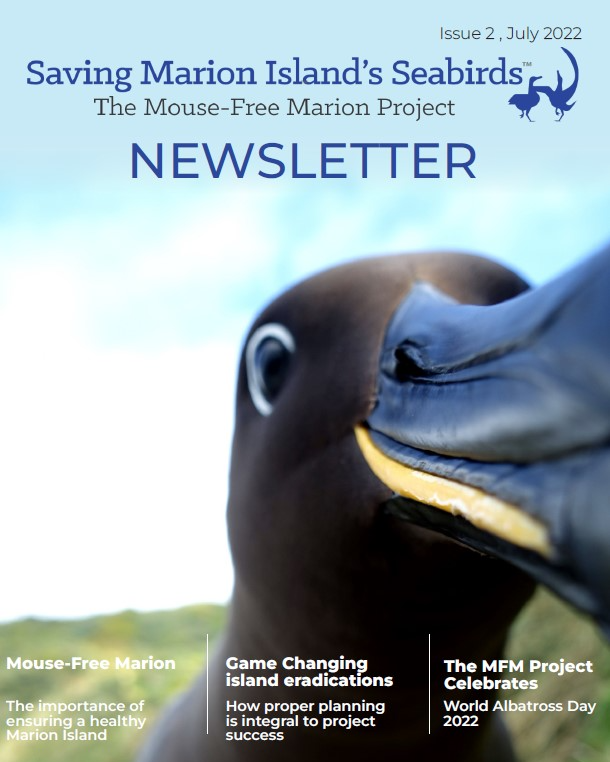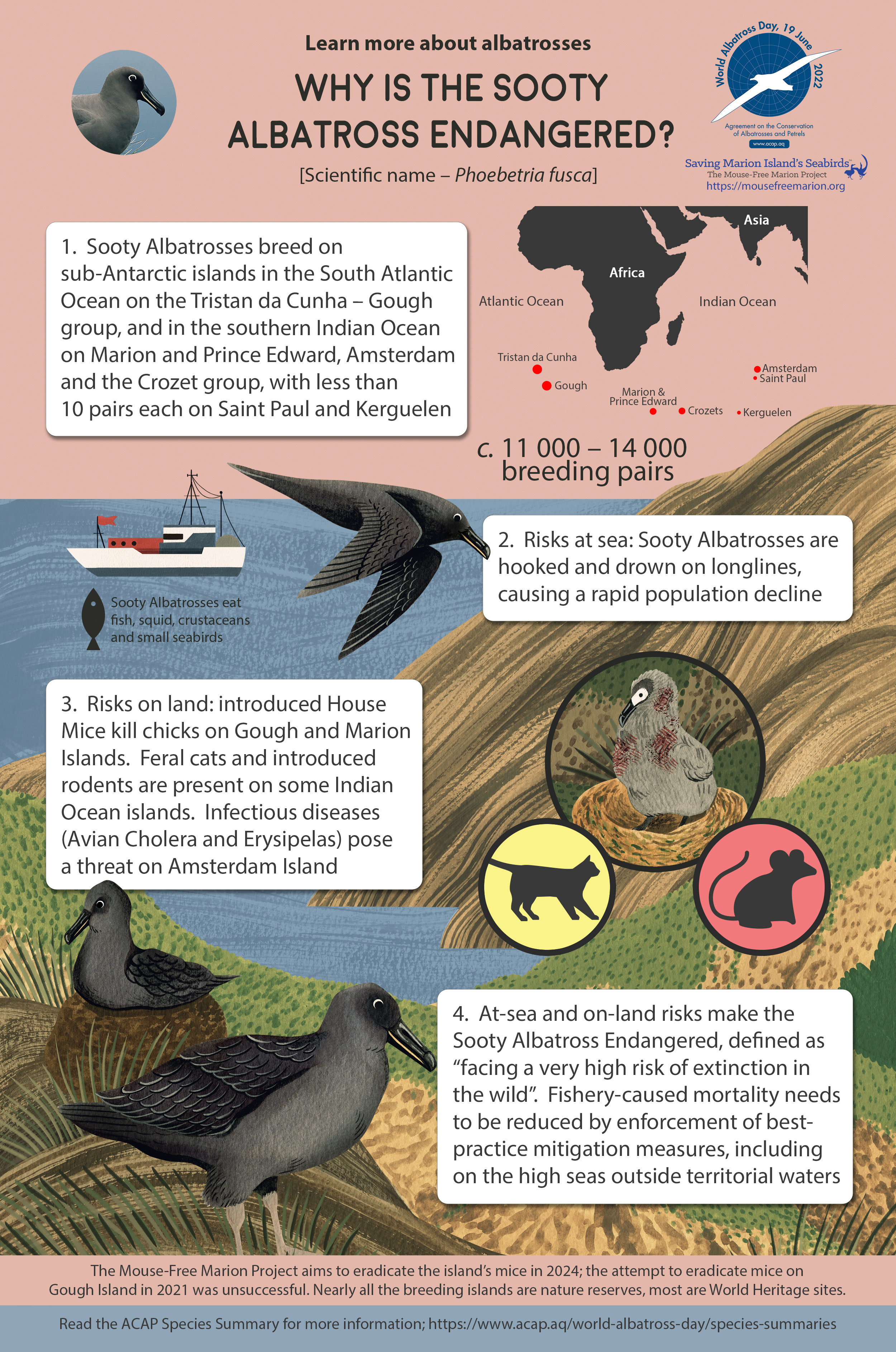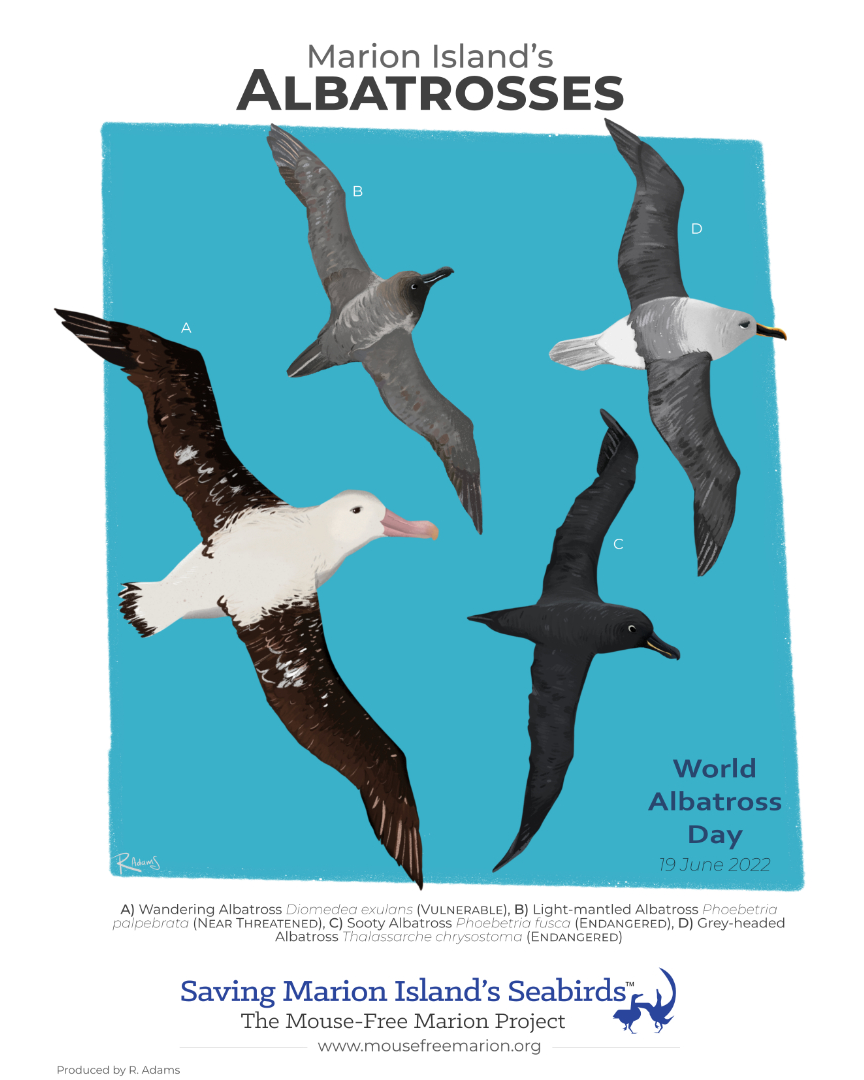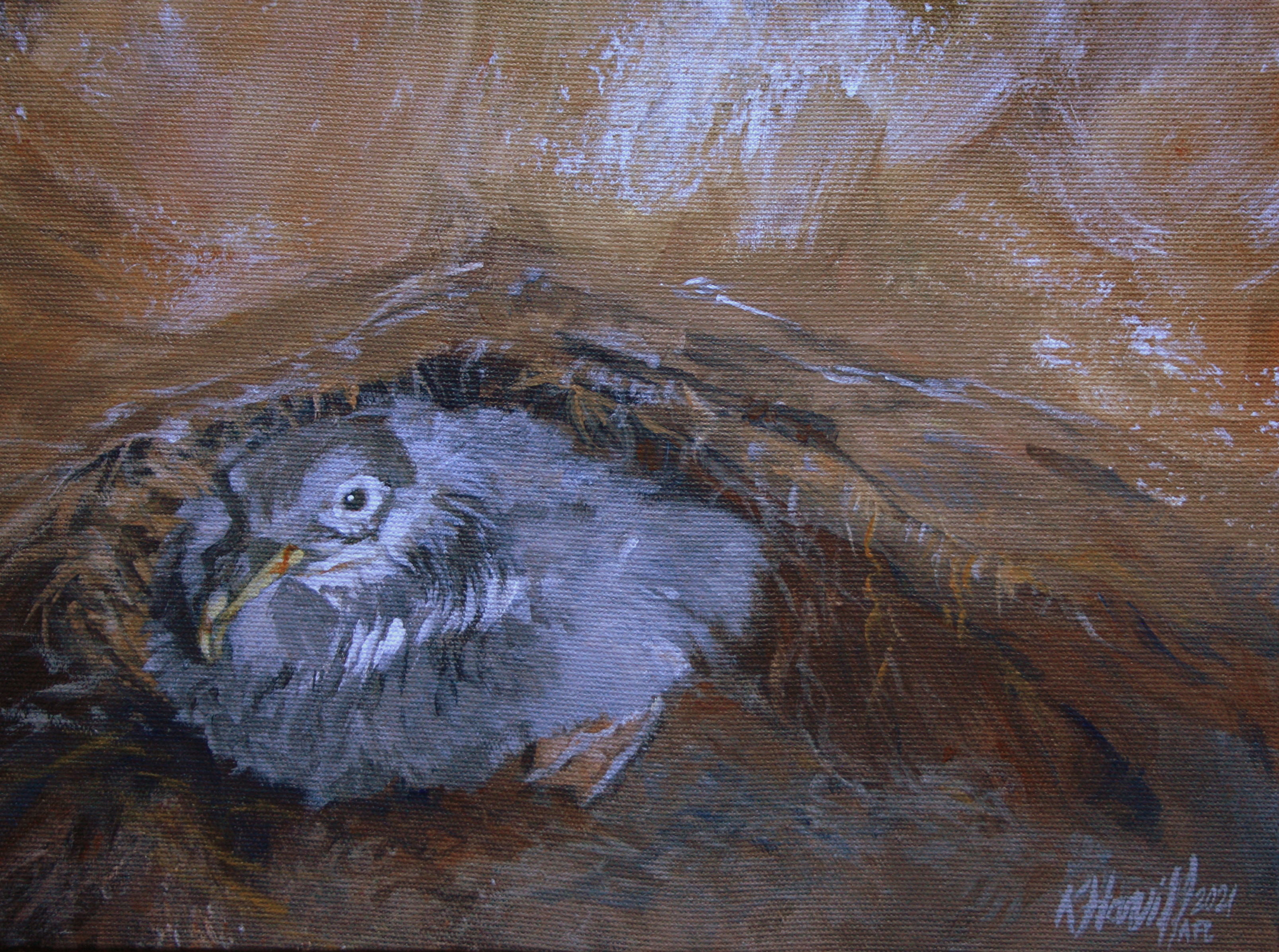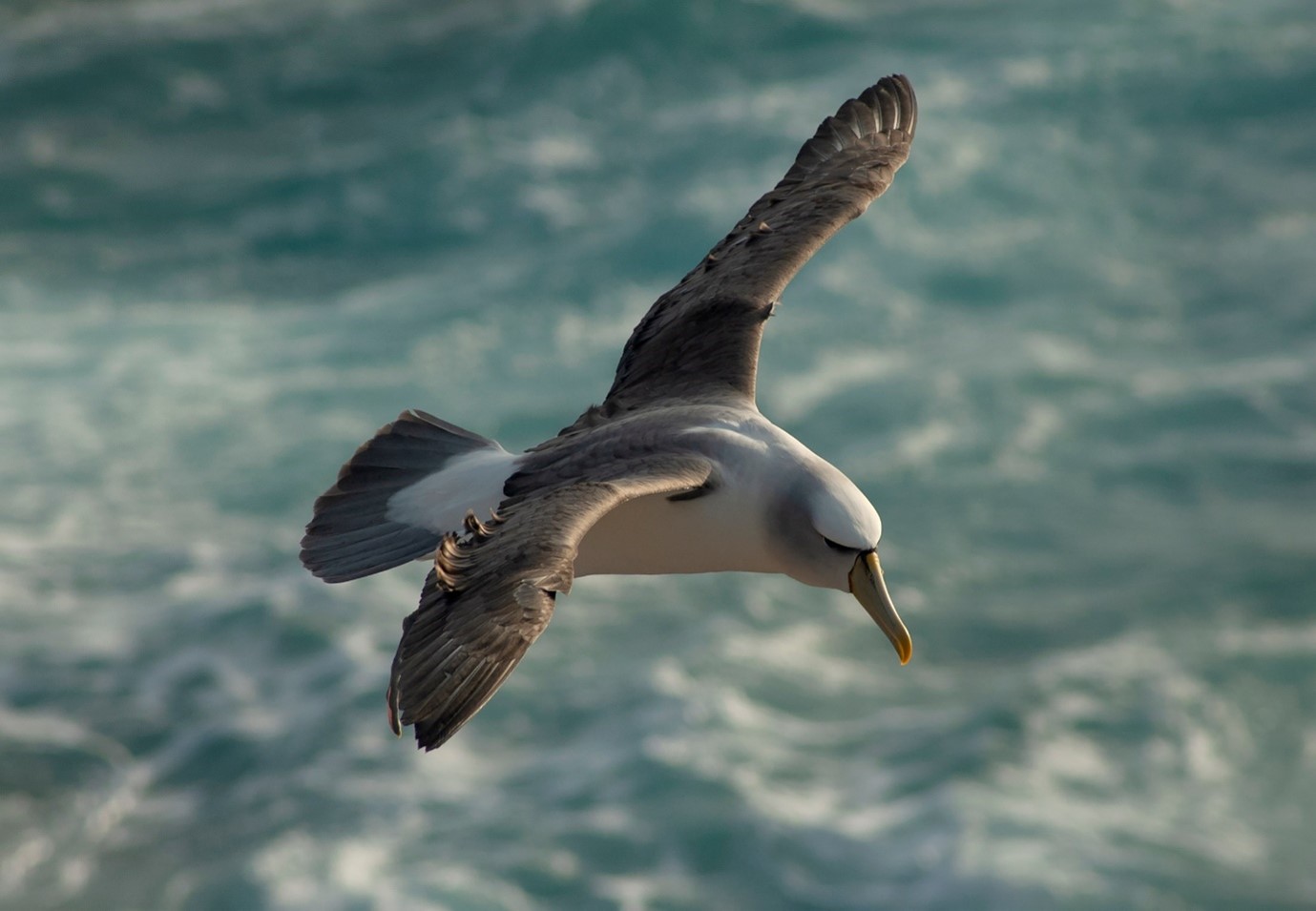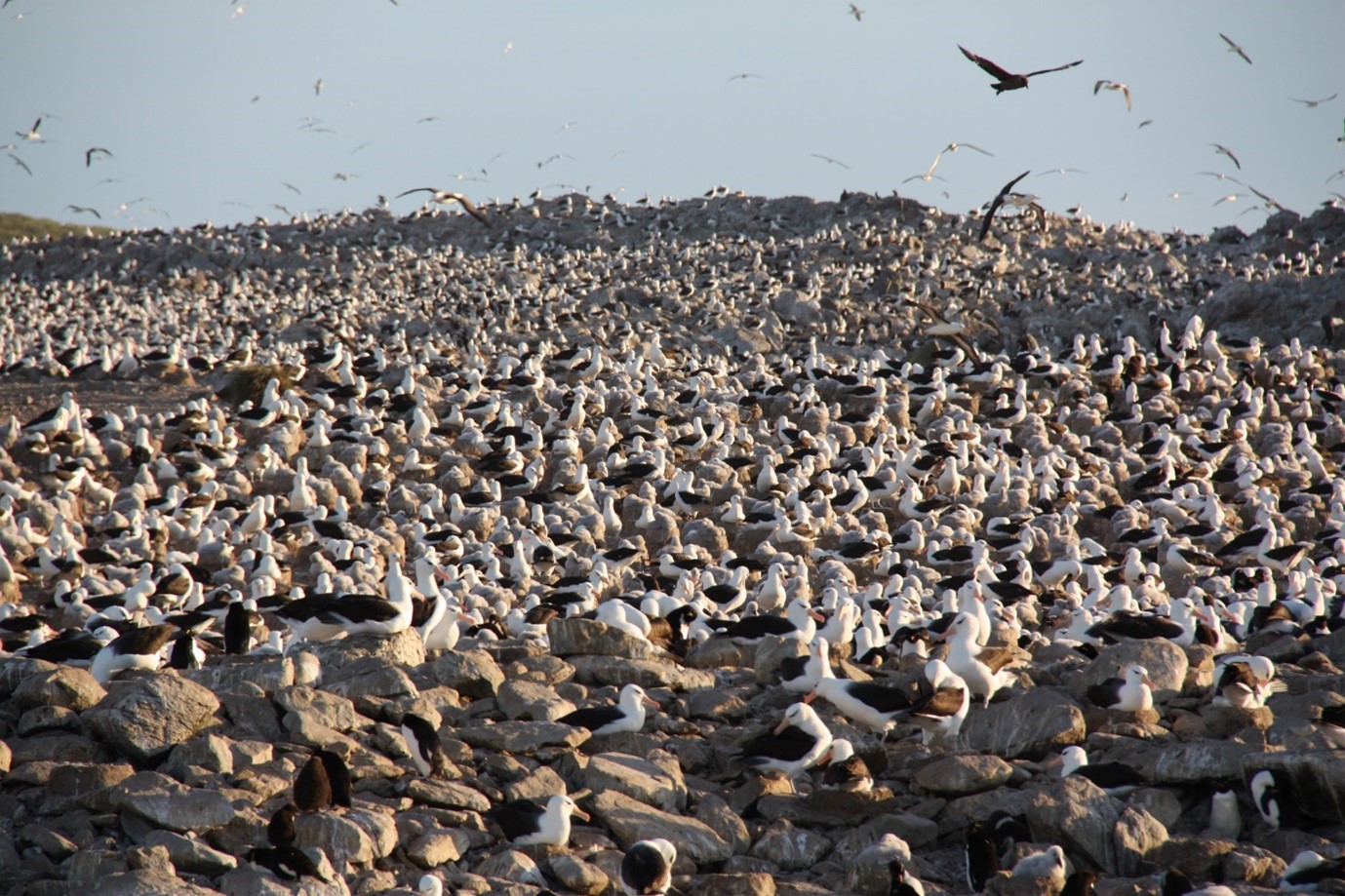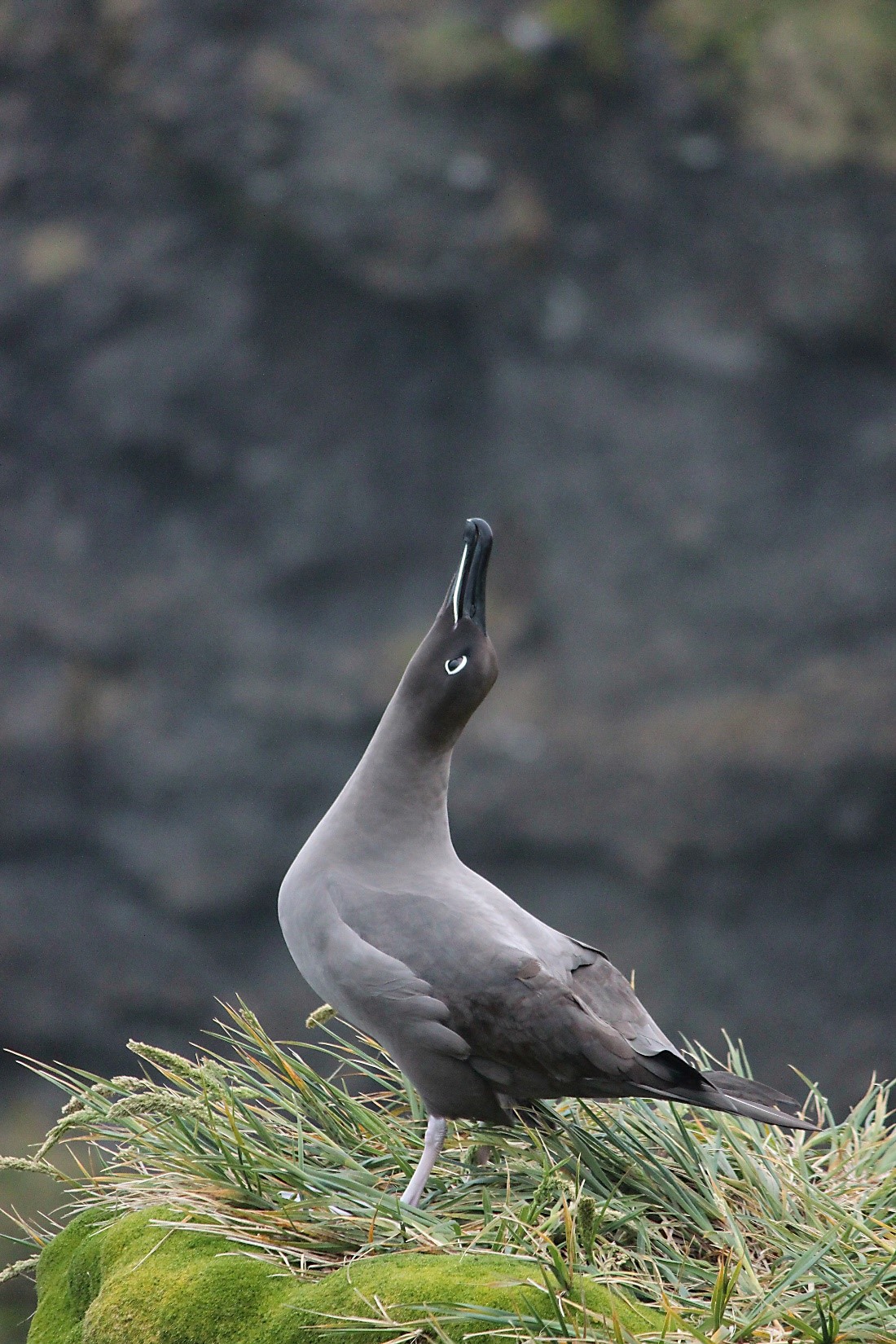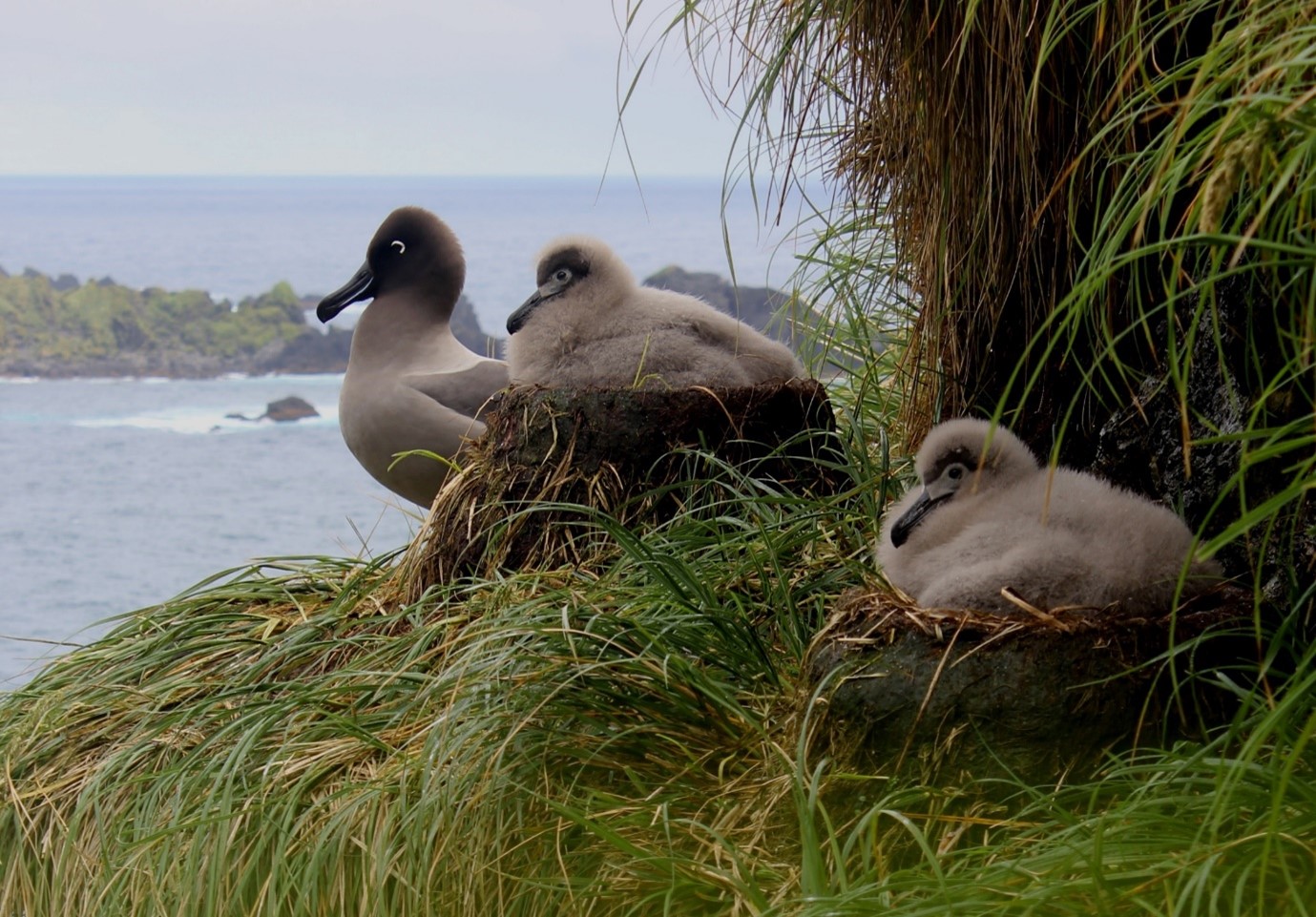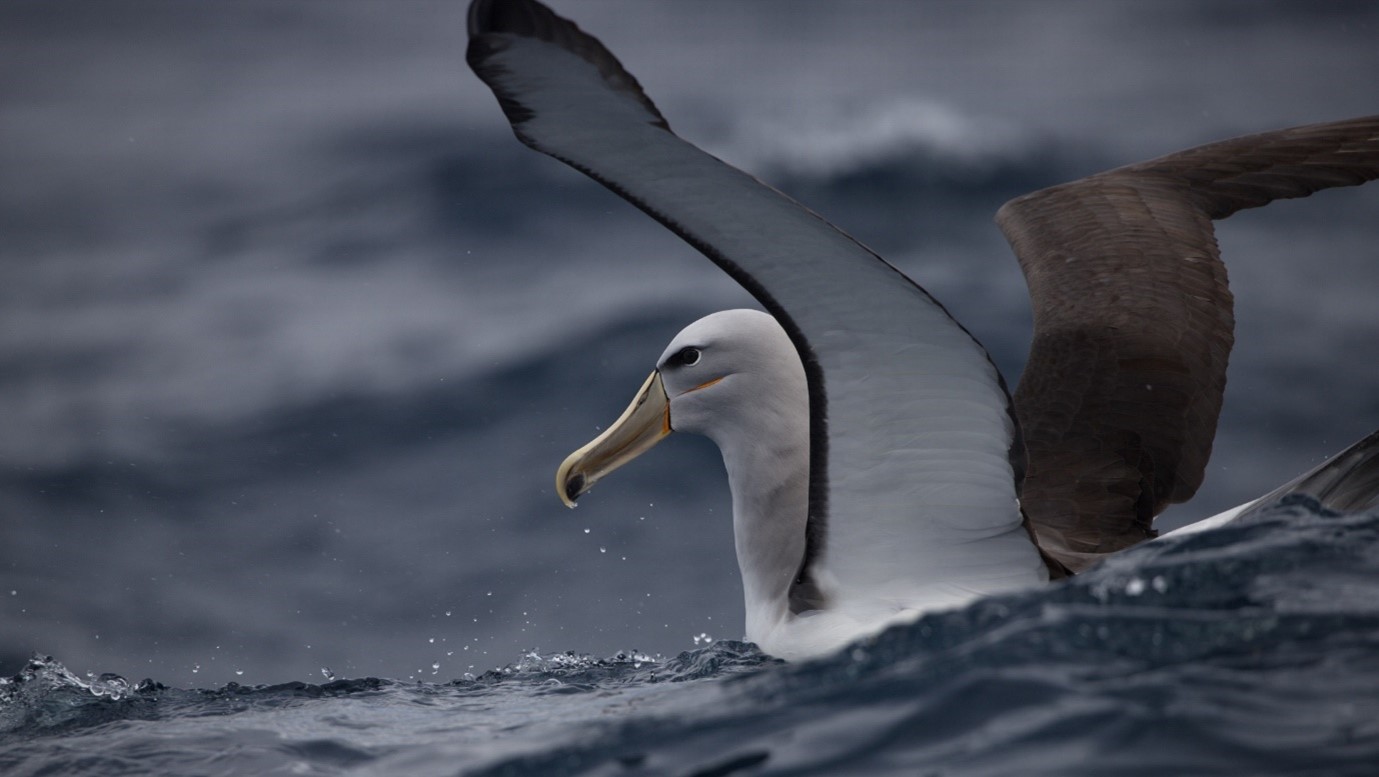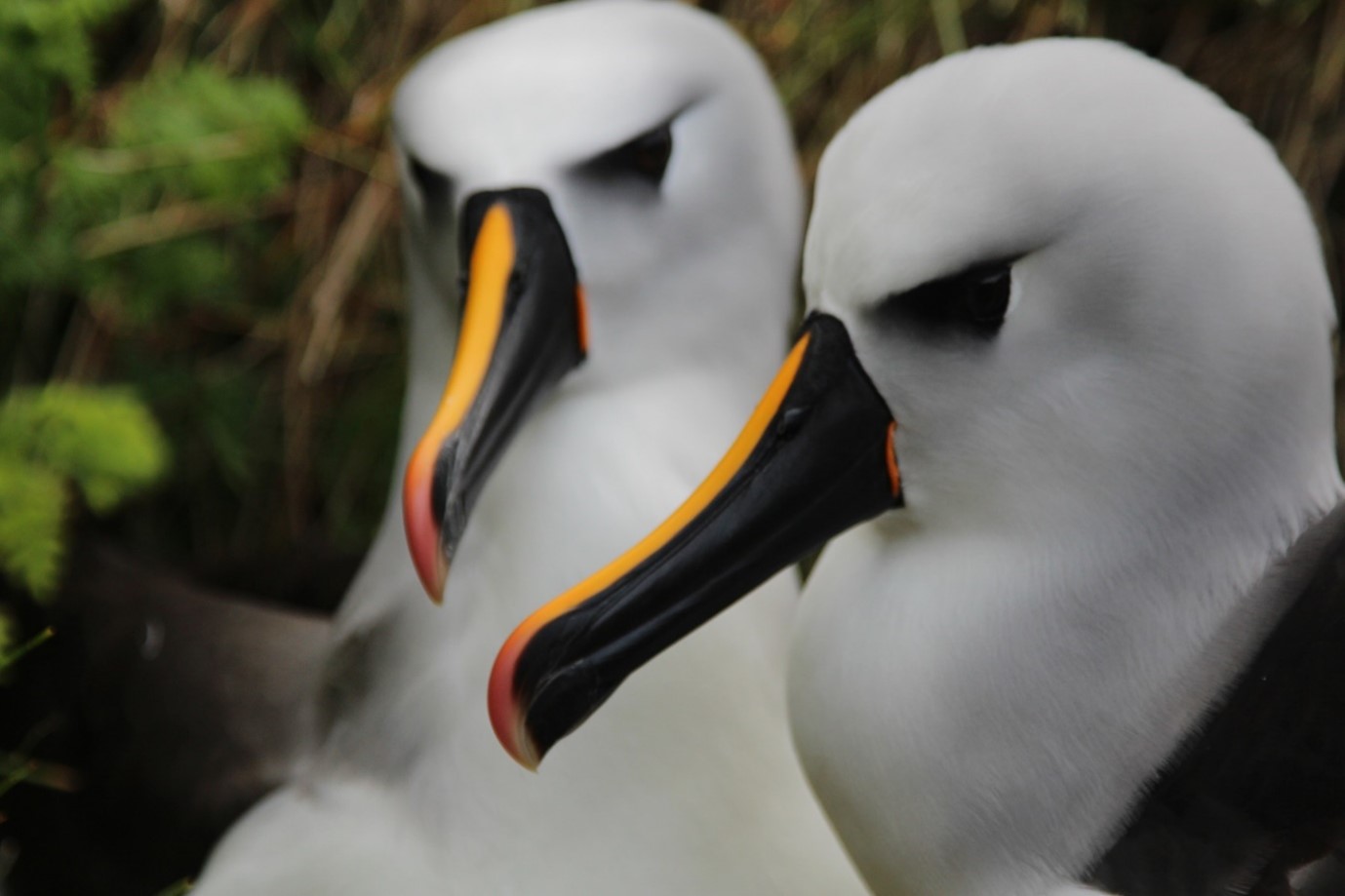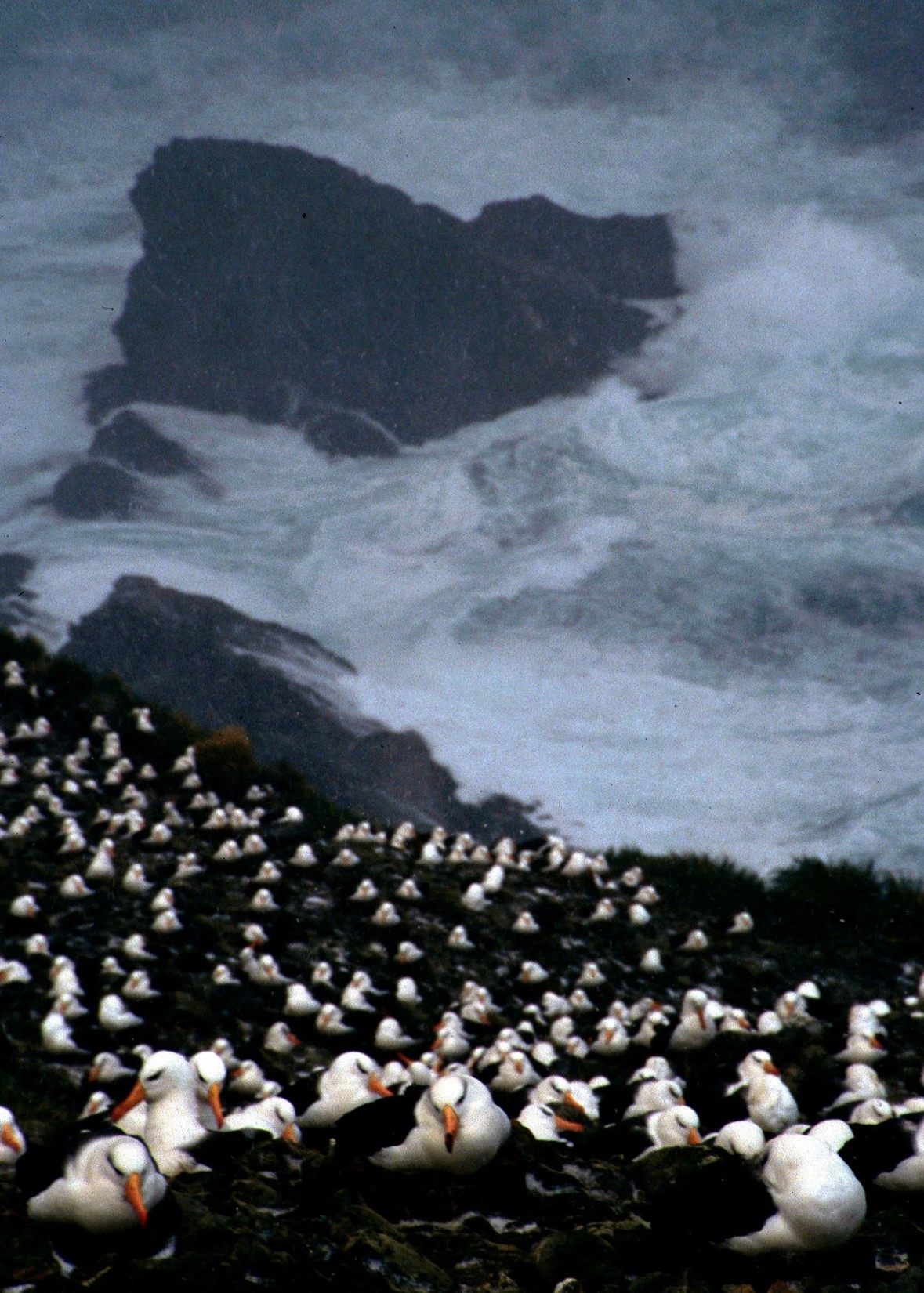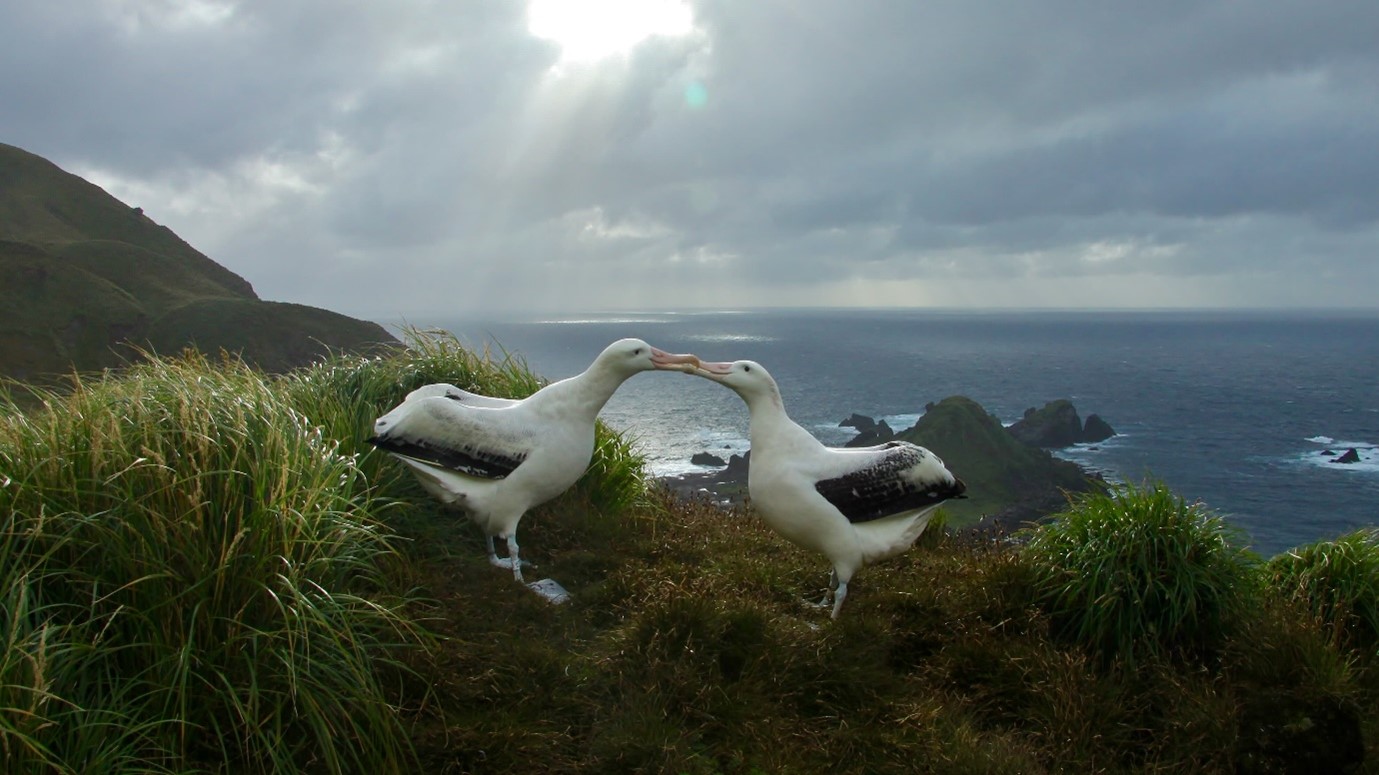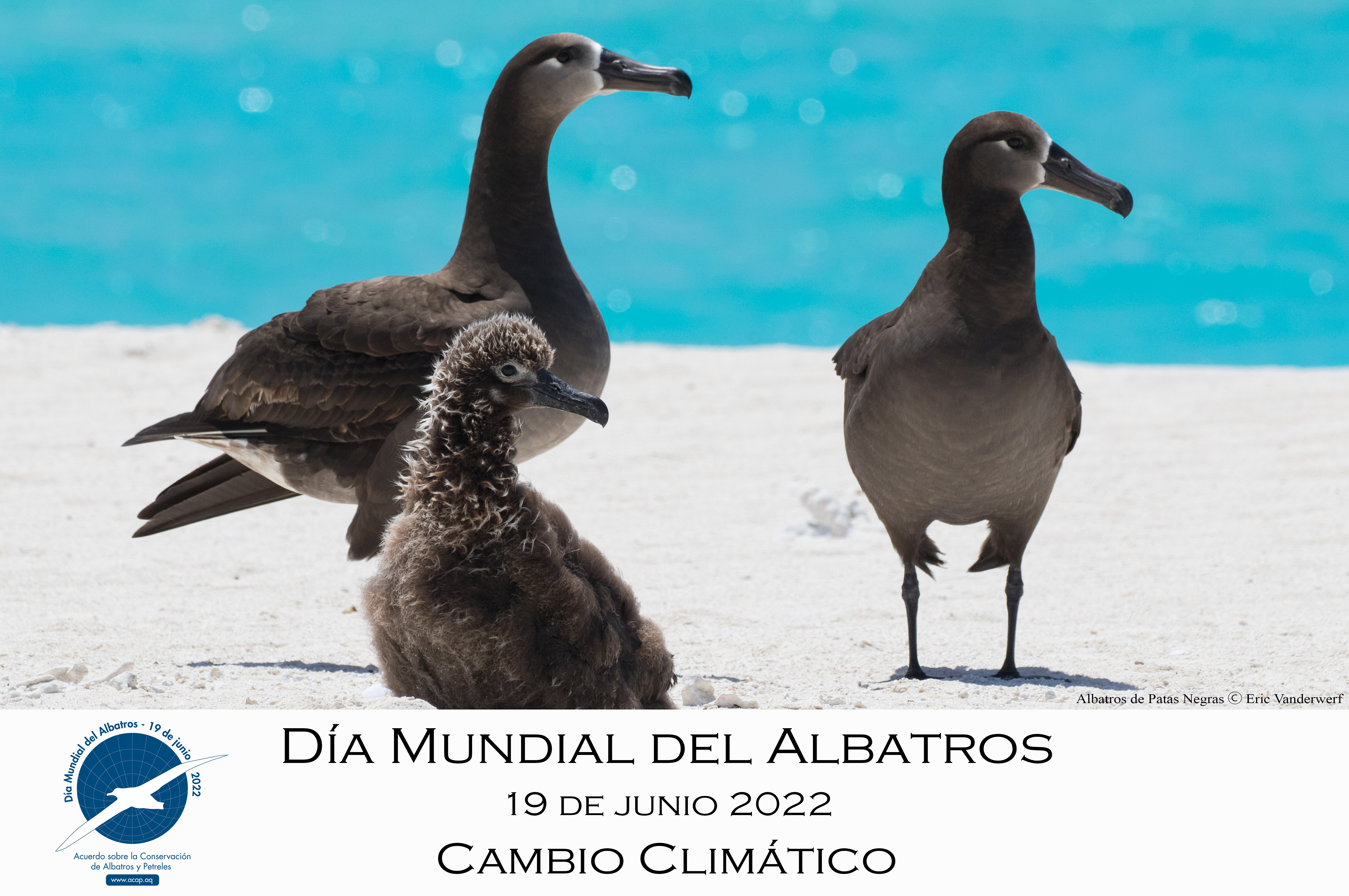
A pair of Wandering Albatrosses on Marion Island, the male (left) is incubating on the nest; photograph by Alexis Osborne
Mia Momberg (Department of Plant and Soil Sciences, University of Pretoria, South Africa) and colleagues have published online in Ibis International Journal of Avian Science on whether wind, vegetation, and geological characteristics affect nest-site selection by globally Vulnerable Wandering Albatrosses Diomedea exulans at Marion Island.
The paper’s abstract follows:
“Several factors may drive bird nest-site selection, including predation risk, resource availability, weather conditions, and interaction with other individuals. Understanding the drivers affecting where birds nest is important for conservation planning, especially where environmental change may alter the distribution of suitable nest sites. This study investigates which environmental variables affect nest-site selection by the Wandering Albatross Diomedea exulans, the world’s largest pelagic bird. Here, wind characteristics are quantitatively investigated as a driver of nest-site selection in surface nesting birds, in addition to several topographical variables, vegetation, and geological characteristics. Nest locations from three different breeding seasons on sub-Antarctic Marion Island were modelled to assess which environmental factors affect nest-site selection. Elevation was the most important determinant of nest-site selection, with Wandering Albatrosses only nesting at low elevations. Distance from the coast and terrain roughness were also important predictors, with nests more generally found close to the coast and in flatter terrain, followed by wind velocity, which showed a hump-shaped relationship with the probability of nest occurrence. Nests occurred more frequently on coastal vegetation types, and were absent from polar desert vegetation (generally above ~ 500 m elevation). Of the variables that influence Wandering Albatross nest location, both vegetation type and wind characteristics are likely to be influenced by climate change, and have already changed over the last 50 years. As a result, the availability of suitable nest sites needs to be considered in light of future climatic change, in addition to the impacts that these changes will have on foraging patterns and prey distribution. More broadly, these results provide insights into how a wide range of environmental variables, including wind, can affect nest-site selection of surface nesting seabirds.”
Reference:
Momberg, M., Ryan, P.G., Hedding, D.W., Schoombie, J., Goddard, K.A., Craig, K.J. & Le Roux, P.C. 2022. Factors determining nest-site selection of surface-nesting seabirds: A case study on the world’s largest pelagic bird, the Wandering Albatross (Diomedea exulans). Ibis International Journal of Avian Science doi.org/10.1111/ibi.13111.
John Cooper, ACAP Information Officer, 15 July 2022

 English
English  Français
Français  Español
Español 